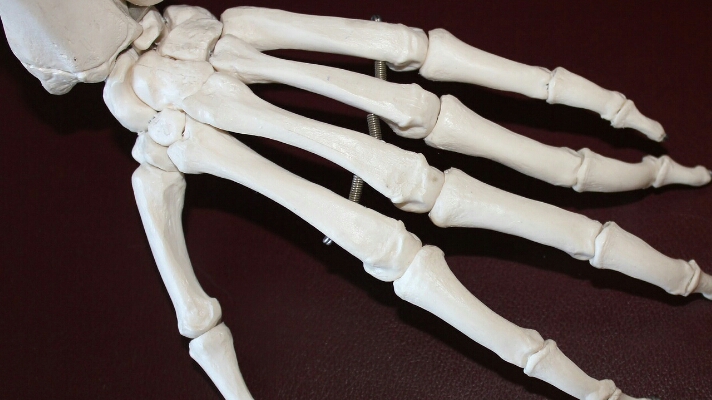Seasonal Variation in Rheumatoid Arthritis
Introduction[edit | edit source]
Rheumatoid arthritis (RA)[1] is a chronic,immuno-inflammatory,systemic disease that mainly affects the synovial joints and extra articular structures of the body.This causes pain,swelling and stiffness mainly in the peripheral joints.[2] The possible causes are genetic,smoking and post natal women.Apart from these RA during specific seasons have also been documented in many people.People may experience pain either during summers,winters or rainy season.What triggers these is not known yet but there have been many cases where changes in seasonal parameters have known to cause or trigger RA.
The seasonal parameters-Atmospheric pressure,Temperature and Humidity have known to cause a flare in RA or trigger the disease.
Influence of Seasonal Parameters on Joints[edit | edit source]
Atmospheric Pressure:It's force exerted by the atmosphere at a given point.It varies at different altitudes from sea level.The atmospheric pressure changes with change in seasons[3].This increase or decrease causes the tendons, muscles, and any scar tissue expand and contract, and that can create pain in joints affected by arthritis.The Arthritis Foundation published a study from Tufts University in 2007 that found that every 10-degree drop in temperature corresponded with an incremental increase in arthritis pain.[4]
Humidity: High humidity levels can cause sweating and dehydration which can make the blood thicker, which increases blood pressure in the blood vessels and makes the body work more to pump blood through the body which can decrease the concentration of fluid around the joints and create more joint pain. The classic opinion, "Cold and wet is bad, warm and dry is good for RA patients," seems to be true only as far as humidity is concerned.[5]
Temperature:It has been speculated that changes in temperature changes the thickness of joint fluids i.e. Low temperatures may also increase the thickness of joint fluids, making them stiffer and perhaps more sensitive to pain during movement.[4][6]
All the above factors together initiate various immunological responses in RA.A change in season causes a rise in level of IgG antibodies (Rheumatoid factor),thereby triggering the RA inflammatory mechanism in the body.[7]
Role of Physiotherapy[edit | edit source]
As physiotherapist have a long term follow up with RA patients,they can document the seasonal parameters using various weather apps during which the patient experiences pain.Depending on these records we can predict when will there will be next trigger of RA and pre-plan the treatment.[8][9]
As per the protocol patient can be recommended various exercises before the onset of RA reducing the pain and stiffness. For example the patient might experience pain whenever the pressure is 1002 mbar,humidity at 17% and temperature 41 degrees, so we can alert the patient whenever these conditions are reached and take preventative measures.
Pneumatic pressure pumps have been found useful in reducing pain and swelling during seasonal flare up.
Alternatively the patient can be asked to change the location whenever the weather conditions turn unfavorable.
Resources[edit | edit source]
Can the weather really worsen arthritis pain
Robert H. Shmerling, MD Faculty Editor, Harvard Health Publishing
References[edit | edit source]
- ↑ RA (Rheumatoid Arthritis)
- ↑ API textbook of medicine,7th edition,Mumbai,The Association of Physicians of India,2006
- ↑ Arthritis Foundation,Weather and Arthritis pain
- ↑ 4.0 4.1 Chikashi Terao , Motomu Hashimoto , Moritoshi Furu, Shuichiro Nakabo, Koichiro Ohmura, Ran Nakashima, Yoshitaka Imura, Naoichiro Yukawa, Hajime Yoshifuji, Fumihiko Matsuda, Hiromu Ito, Takao Fujii, Tsuneyo Mimori, Inverse Association between Air pressure and Rheumatoid arthritis Synovitishttps://doi.org/10.1371/journal.pone.0085376
- ↑ Wiebe R Patberg and Johannes J Rasker,Weather effects in rheumatoid arthritis: from controversy to consensus. A review.The Journal of Rheumatology July 2004, 31 (7) 1327-1334
- ↑ LydiaAbasoloaAurelioTobíasbLeticiaLeonacLoretoCarmonacJose LuisFernandez-RuedaaAna BelenRodriguezdBenjaminFernandez-GutierrezdJuan AngelJoverd, Weather conditions may worsen symptoms in rheumatoid arthritis patients:,The possible effect of Temperature,Reumatología Clínica (English Edition)Volume 9, Issue 4, July–August 2013, Pages 226-228
- ↑ Terao, Chikashi; Ohmura, Koichiro; Yamamoto, Keiichi; Yukawa, Naoichiro; Kawabata, Daisuke; Nojima, Takaki; Fujii, Takao; Mimori, Tsuneyo,Serum IgG levels demonstrate seasonal change in connective tissue diseases: a large-scale, 4-year analysis in Japanese.Modern rheumatology/the Japan Rheumatism Association (2012), 22(3): 426-430.
- ↑ Whole-body cryotherapy
- ↑ Aquatherapy







